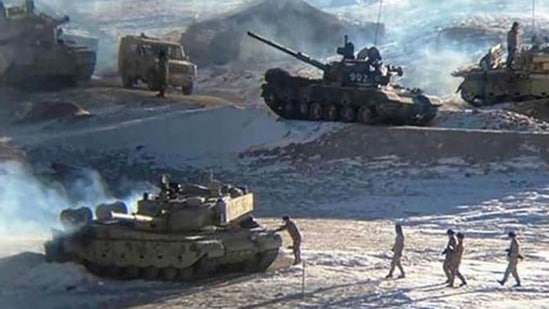US expresses support for India against China’s coercive tactics at border
Washington Terming China as the most consequential strategic competitor to the United States for the coming decades, the US national defence strategy (NDS) has committed to deepening America’s major defence partnership with India to enhance its ability to deter China both at land and sea
Washington Terming China as the most consequential strategic competitor to the United States for the coming decades, the US national defence strategy (NDS) has committed to deepening America’s major defence partnership with India to enhance its ability to deter China both at land and sea. It has also said that the US will support allies and partners against acute forms of “grey zone coercion” by China, including at the disputed border with India.

Secretary of Defense Lloyd J Austin released the NDS on Thursday, days after the Joe Biden administration released its national security strategy which declared that its top priority was outcompeting China and constraining Russia.
In his introductory note to the strategy, Austin said that China remained the US’s “most consequential strategic competitor” for the coming decades. “I have reached this conclusion based on the PRC’s increasingly coercive actions to reshape the Indo-Pacific region and the international system to fit its authoritarian preferences, alongside a keen awareness of the PRC’s clearly stated intentions and the rapid modernization and expansion of its military.”
The NDS, Austin noted, directed the Department of Defense to “act urgently” to “sustain and strengthen” American deterrence against China, which has been identified as the pacing challenge for the department. The strategy also speaks of working to reinforce “robust deterrence” against Russia, while “mitigating and protecting against threats from North Korea, Iran, violent extremist organizations and trans-boundary challenges such as climate change”.
In a section on the security environment, the strategy says that China is seeking to undermine US alliances and partnerships in the region and leverage its growing capabilities to “coerce neighbours and threaten their interests”. It terms China’s “increasingly provocative rhetoric and coercive activity” towards Taiwan as destabilising, and risking miscalculation. “This is a part of a broader pattern of destabilizing and coercive PRC behaviour that stretches across the East China Sea, South China Sea and the Line of Actual Control”, the last being a nod to China’s aggression at the border with India.
The NDS also outlines China’s growing military capabilities, acknowledging that Beijing has modernised and expanded “nearly every aspect” of the People’s Liberation Army, “with an aim to offset U.S. military advantages”. The PLA is also rapidly advancing and integrating its “space, counterspace, cyber, electronic and informational warfare capabilities”. The US strategy notes that PLA is also expanding its global footprint, establishing a “more robust overseas and basing infrastructure”, while accelerating the modernisation and expansion of its nuclear capabilities.
The US, NDS says, will increasingly face the challenge of “deterring two major powers with modern and diverse nuclear capabilities”, China and Russia, creating “new stresses on strategic stability”.
On the Indo Pacific, NDS says that Pentagon will “reinforce and build out a resilient security architecture” to sustain a “free and open regional order and deter attempts to resolve disputes by force”. The strategy says the US will modernise its alliance with Japan and strengthen “combined capabilities by aligning strategic planning and priorities in a more integrated manner”; Washington will deepen its alliance with Australia with “investments in posture, interoperability and expansion of multilateral cooperation” and foster advanced tech cooperation through AUKUS and Quad.
It is in this section that the strategy speaks of India. “The Department will advance our Major Defense Partnership with India to enhance its ability to deter PRC aggression and ensure free and open access to the Indian Ocean region.” It then goes on to commit support for Taiwan’s “asymmetric self-defense”, work with South Korea to improve its defence capability, promote the role of ASEAN in addressing regional security challenges, and “ensure power projection in a contested environment”.
The strategy then says that the US will work with allies and partners to address “acute forms of gray zone coercion” by China’s campaigns to establish control over the “East China Sea, Taiwan Strait, South China Sea, and disputed land borders such as with India”.
NDS has listed four top priorities for Pentagon – defending the homeland; deterring strategic attacks against the US, its allies and partners; deterring aggression and preparing to prevail in conflict; and ensuring US’s military advantage by building a resilient joint force and defence ecosystem. The strategy plans to achieve these priorities by focusing on integrated deterrence, campaigns and actions, with integrated deterrence entailing working seamlessly across “warfighting domains, theaters, spectrum of conflict, all instruments of US national power, and our networks of Allies and partnerships”.
Get Current Updates on India News, Lok Sabha election 2024 live, Election 2024 along with Latest News and Top Headlines from India and around the world.




